
*
www.tissot.ch
157_EN / 02.14
1/3
Analogue Mechanical
Watches
User’s Manual
Display and functions
Seconds hand
Minute hand
Hour hand
Date*
Day*
* According to model
Models with a screwed crown :
IA Initial position (screwed down, not pulled out)
IB Winding position (unscrewed, not pulled out)

Analogue Mechanical Watches
*
www.tissot.ch
157_EN / 02.14
2/3
Congratulations
We congratulate you on choosing a TISSOT
®
watch, a Swiss brand
among the most highly renowned in the world. Meticulously designed,
using only the highest quality materials and components, your watch is
protected against shocks and impacts, variations in temperature, water
and dust.
To ensure that your watch operates with perfect precision for many
years to come, we recommend that you pay careful attention to the
advice provided hereafter.
This user manual applies to all TISSOT
®
mechanical watches
(hand-wound or automatic). Please refer to the explanations relating
specifically to your watch model.
Winding
Models with screwed crown
To ensure even better water resistance, certain models are fitted with a
screwed crown. Before setting the time, winding or setting the date* or
day*, you must first unscrew the crown into position IB.
Important: After every operation, the crown must be screwed
back in to maintain the water-resistance of the watch.
Hand-wound mechanical watches
Hand-wound watches must be wound regularly by hand in order to
remain in continuous operation (e.g. every morning before putting the
watch on your wrist). To do so, pull the crown into position I and turn
it forward until it locks. The power reserve of fully wound mechanical
movements varies from 36 to 80 hours, depending on the models.
Automatic mechanical watches
Your watch must be wound manually if it has stopped or not been
worn for several days, in order to ensure that your watch remains in
continuous operation during periods of low activity (e.g. during sleep).
In these cases, turn the crown through 30 revolutions forward in
position I. The automatic winding system will then ensure that the
movement is fully wound if the watch is on your wrist. It is also
possible to fully wind an automatic watch manually by means of the
winding crown. However, please note that automatic movements have
a slipping spring, which disengages the winding system (the crown can
be turned infinitely) once the movement has been fully wound. Generally
speaking, 80 revolutions of the crown are enough to fully wind most
automatic mechanical watches.
The efficiency of the automatic winding system of a mechanical
movement depends on the wrist movements of the person
wearing the watch. Do not deliberately shake your automatic
watch to wind it; this has no effect and could damage the watch.
Settings
NB: Please take account of the information above if your watch
is fitted with a screwed crown.
Setting the time
Pull the crown out to position III and turn it in either direction until the
desired time is displayed.
On certain models with a seconds hand, you can synchronize it with an
official time signal (radio/ TV/Internet). When the crown is pulled out to
position III, the seconds hand is stopped. Once the time is synchronised,
push the crown back into position I (and screw it back in on models with
a screwed crown).
Note: certain calibres do not have a “stop seconds” mechanism.
To synchronise them, you need to turn the crown backward slightly and
hold back the tension, thereby stopping the seconds hand. You then
need only release the tension when the display matches the time signal.
Rapid correction of the date* and day*
NB: Do not perform a rapid date correction between 22:00
and 02:00.
Pull the crown out to position II and turn it clockwise until the desired
date is displayed, or counterclockwise to correct the day. During this
operation, your watch will keep operating, so you will not need to
adjust the time.
Technical information
Power reserve
TISSOT
®
Automatic watches draw their energy from an oscillating
weight which is activated in response to the natural movements of your
wrist. This weight keeps the watch wound. Automatic watches do not
need a battery. Depending on the model, the power reserve varies from
36 to 80 hours.
Accuracy
The accuracy of a mechanical watch depends on the movements
and habits of the person wearing it, and so it can vary. A TISSOT
®
qualified watchmaker can adjust the accuracy of a watch within
the TISSOT
®
tolerance thresholds. Most watches which are not
certified chronometers have an average accuracy tolerance of around
-10/+30 seconds per day.
A chronometer is a precision mechanical watch which has obtained
an official certificate issued by COSC (Contrôle Officiel Suisse des
Chronomètres), after its movement has passed several accuracy tests
in various positions and at various temperatures, as well as water-
resistance tests performed in the laboratory for 15 days and 15 nights.
To be awarded the title of chronometer, the average accuracy of a
mechanical movement must be between -4/+6 seconds per day.
Water-resistance
TISSOT
®
watches are designed to withstand a pressure of up to 3 bar
(30 m / 100 ft), 5 bar (50 m / 165 ft), 10 bar (100 m / 330 ft), 20 bar
(200 m / 660 ft) or 30 bar (300 m / 1000 ft), depending on the information
shown on the case-back.
A watch cannot be permanently guaranteed absolutely water-resistant.
It may be affected by ageing of the gaskets or by an accidental impact
on the watch. We recommend that you have your watch’s water
resistance checked once a year by an approved TISSOT
®
service centre.
Care and maintenance
Temperature
Do not expose your watch to sudden temperature changes (exposure to
sunlight followed by immersion in cold water) or extreme temperatures
(over 60°C (140°F) or below 0°C (32°F)).
Magnetic fields
Do not expose your watch to intense magnetic fields such as those
generated by loudspeakers, mobile phones, computers, refrigerators or
other electromagnetic appliances.
Shocks and impacts
Avoid thermal shocks or impacts, since they may harm your watch. In
the event of a violent impact please have your watch checked by an
approved TISSOT
®
service centre.

Analogue Mechanical Watches
*
www.tissot.ch
157_EN / 02.14
3/3
Harmful products
Prevent your watch from coming into any direct contact with solvents,
detergents, perfumes, cosmetic products etc., since they may damage
the bracelet, the case or the gaskets.
Cleaning
We would advise you to clean your watch regularly (except for the
leather strap) using a soft cloth and lukewarm soapy water. After
immersion in salty water, rinse your watch in fresh water and leave it
to dry completely.
Services
Like any precision instrument, a watch must be serviced regularly for
optimum operation. As a general rule, we recommend that you have
your watch checked every 3 to 4 years by your approved TISSOT
®
retailer or service centre. However, please note that depending on the
climate and the conditions of use of the watch, a shorter interval may be
required. To benefit from the highest standards of service and to ensure
your guarantee remains in force, please always contact an approved
TISSOT
®
retailer or service centre.
Availability of spare parts
From the stoppage date of the watch production, TISSOT
®
guarantees
the availability of its spare parts for a minimum period of 10 years for
standard watches, and for a period of up to 20 years for gold watches.
If for any reason production of a particular spare part is stopped or
deferred, TISSOT
®
reserves the right, at its sole discretion, to offer the
customer an alternative solution.
-
 1
1
-
 2
2
-
 3
3
Ask a question and I''ll find the answer in the document
Finding information in a document is now easier with AI
Related papers
-
Tissot Analogue Mechanical Watches User manual
-
Tissot PRC 200 User manual
-
Tissot T02218185 User manual
-
Tissot T036.417.17.057.01 User manual
-
Tissot Chronographs G15 User manual
-
Tissot Analog Watches with alarm User manual
-
Tissot Moon phases User manual
-
Tissot GMT User manual
-
Tissot QUARTZ CHRONOGRAPHS User manual
-
Tissot NAVIGATOR WATCHES User manual
Other documents
-
Marathon WW194003 User manual
-
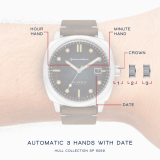 Spinnaker HUll Series Quick start guide
Spinnaker HUll Series Quick start guide
-
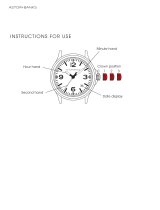 Astor+Banks Pilomatic Operating instructions
Astor+Banks Pilomatic Operating instructions
-
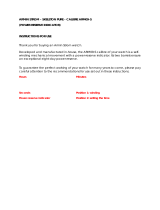 Armin Strom Skeleton Pure ARM09-S Operating instructions
Armin Strom Skeleton Pure ARM09-S Operating instructions
-
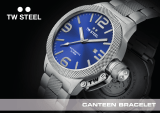 TW Steel Steel Bracelet Automatic Owner's manual
TW Steel Steel Bracelet Automatic Owner's manual
-
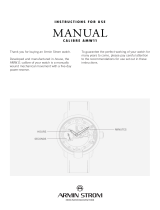 Armin Strom CALIBRE AMW11 Operating instructions
Armin Strom CALIBRE AMW11 Operating instructions
-
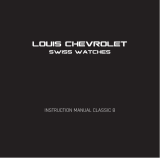 Louis Chevrolet CLASSIC 8 User manual
Louis Chevrolet CLASSIC 8 User manual
-
Certina Analog Watches User manual








